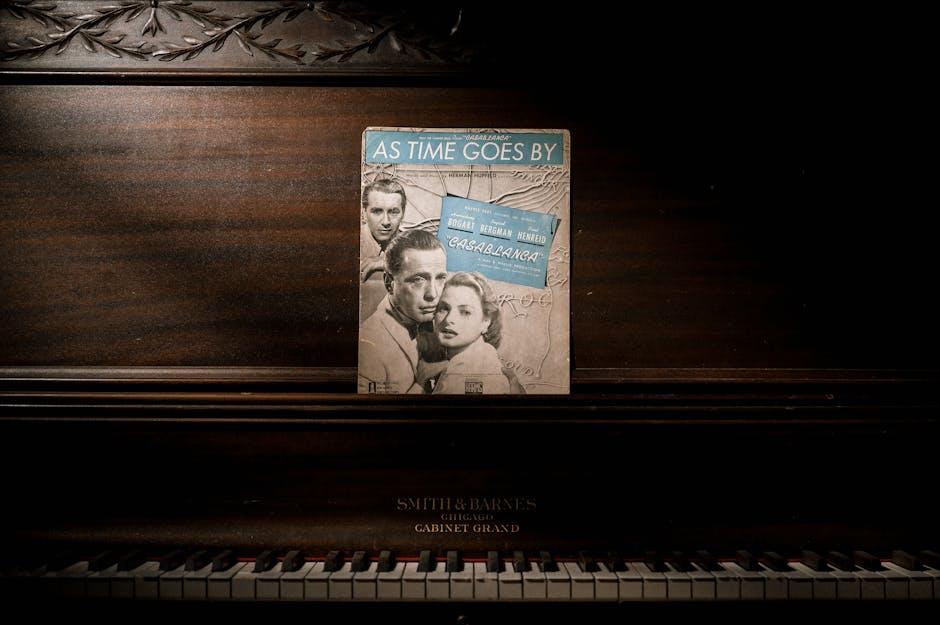In the pantheon of cinematic romance, few films have achieved the enduring legacy of “Casablanca.” Released in 1942, this iconic masterpiece continues to captivate audiences with its poignant narrative and timeless appeal. As we delve into the elements that cement its status as the greatest romance film of all time, it becomes clear that “Casablanca” transcends its era through a masterful blend of storytelling, unforgettable performances, and a profound exploration of love’s complexities. This analysis unravels the film’s enduring allure, examining how its intricate tapestry of emotion and context continues to resonate across generations, affirming its unparalleled place in the annals of cinematic history.
Timeless Chemistry and Iconic Performances
The undeniable allure of Casablanca lies in its magnetic chemistry and unforgettable performances. Humphrey Bogart and Ingrid Bergman deliver an electrifying dynamic that transcends the screen, embodying the complex layers of love and sacrifice. Their portrayal of Rick and Ilsa, two souls torn between personal desire and moral duty, captivates audiences with every glance and shared silence. This palpable connection is a testament to the actors’ ability to convey deep emotion with subtlety and grace.
- Bogart’s Rick Blaine: A portrait of rugged vulnerability, his journey from cynicism to selflessness is compelling and nuanced.
- Bergman’s Ilsa Lund: A beacon of elegance and internal conflict, she balances strength with tenderness effortlessly.
Supporting characters further enrich the narrative, each contributing to the film’s rich tapestry. Claude Rains as Captain Renault, for instance, infuses humor and moral ambiguity, while Dooley Wilson’s Sam offers warmth and nostalgia through music. These performances collectively elevate Casablanca, ensuring its status as a timeless masterpiece.

Masterful Storytelling and Enduring Themes
At the heart of Casablanca lies its masterful storytelling, a tapestry woven with intricate character development and compelling dialogue. The film’s narrative transcends the boundaries of a conventional romance, intertwining themes of sacrifice, loyalty, and moral ambiguity. Rick Blaine, the enigmatic protagonist, embodies the struggle between personal desire and selfless duty. His journey is not just about rekindling a lost love but confronting the complex layers of his own identity.
- Timeless Themes: The film explores the tension between love and sacrifice, asking whether personal happiness should be set aside for a greater cause.
- Complex Characters: Each character, from the idealistic Ilsa Lund to the cunning Captain Renault, serves as a mirror reflecting the film’s deeper philosophical questions.
- Unforgettable Dialogue: Lines like “Here’s looking at you, kid” have become iconic, not just for their romance, but for their resonance with the film’s enduring themes.
These elements come together to create a narrative that is as engaging today as it was upon its release. The film’s ability to balance personal stories with universal themes ensures its place as a timeless masterpiece in cinematic history.

Cinematic Techniques That Set a Standard
The brilliance of “Casablanca” lies in its masterful use of cinematic techniques that continue to influence filmmakers. Lighting plays a crucial role, with chiaroscuro effects creating a mood of mystery and romance. This technique enhances the emotional depth of key scenes, drawing viewers into the complex world of Rick and Ilsa.
- Camera Angles: The use of tight close-ups intensifies the chemistry between the characters, allowing the audience to feel their unspoken emotions.
- Montage: Seamless transitions between past and present weave a narrative that feels both nostalgic and immediate, reinforcing the timeless nature of their love story.
- Symbolism: Recurring motifs, like the airport, underscore themes of departure and sacrifice, embedding layers of meaning within the visual storytelling.
These techniques not only set a standard but also elevate “Casablanca” to a cinematic masterpiece that remains unmatched in its portrayal of romance.
Cultural Impact and Lasting Legacy
The timeless allure of Casablanca is woven into the fabric of global culture, transcending its origins as a wartime romance. Its influence is evident in countless films and television shows that emulate its iconic blend of love and sacrifice. Rick Blaine and Ilsa Lund have become archetypes of romantic complexity, embodying the notion that true love sometimes means letting go. This narrative depth resonates universally, allowing audiences to connect with the film’s emotional core across generations.
- Iconic Lines: Quotes like “Here’s looking at you, kid” have permeated everyday language, cementing their place in popular culture.
- Symbolic Imagery: The film’s recurring motifs, such as the foggy airfield goodbye, have become symbols of bittersweet partings.
- Enduring Music: The haunting melody of “As Time Goes By” continues to evoke nostalgia and longing, underscoring the film’s lasting emotional impact.
These elements contribute to a legacy that is not only cinematic but also deeply cultural, reinforcing Casablanca‘s status as a paragon of romantic storytelling.

